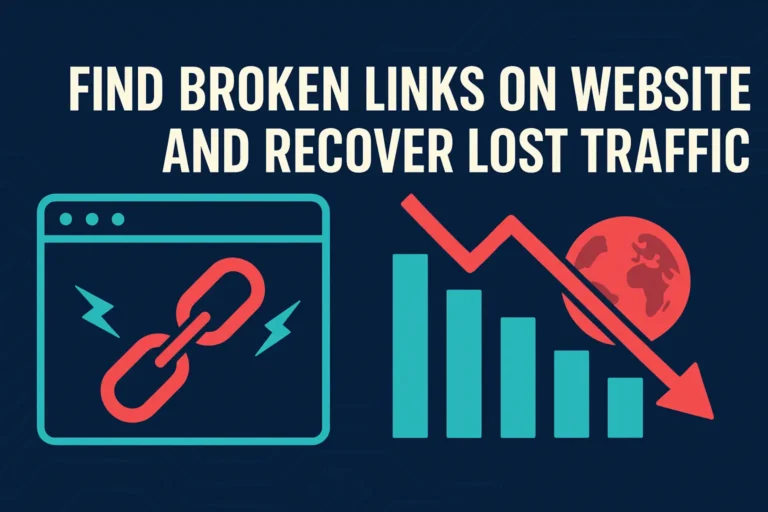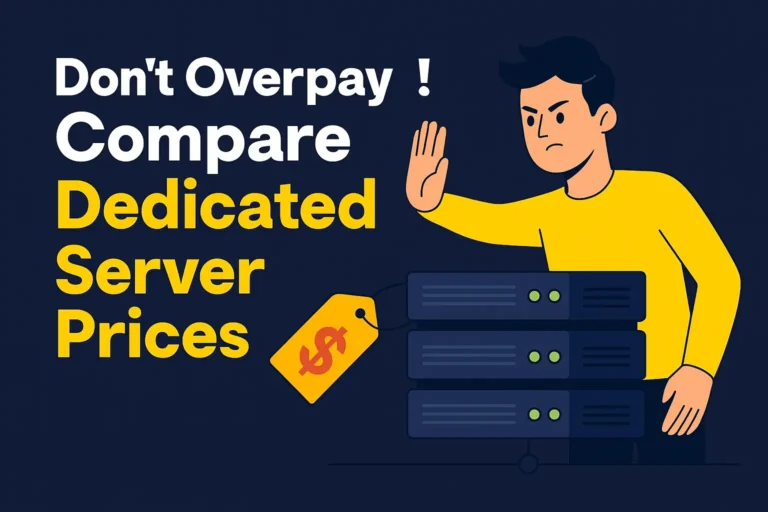If you’ve been blogging or creating content for any time, you’ve likely heard about Google Discover. But just hearing the name isn’t enough. You want your content to appear there. The good news is, most content creators still overlook powerful tricks that can unlock serious Discover traffic. In this article, I’ll walk you through Google Discover tricks you’re not using (but should) — in human, practical language — so you can actually improve your chances of being shown.
What Is Google Discover — And Why It Matters
Before diving into advanced tricks, let’s recap what Google Discover really is. It’s a feed, mostly mobile‑based, that surfaces content to users based on their interests, search history, and behavior. Google describes it as content that’s “automatically eligible” if it’s indexed and meets their content policies.
Unlike search, users don’t type queries. Discover passively shows articles it thinks will interest someone. So the mechanics of appearing there differ from traditional SEO. Your content must match the user’s interests, but also pass Google’s quality filters.
Why it matters: when your post shows in Discover, you can get a sudden surge of traffic, especially beyond your usual audience. Many site owners report that Discover traffic, though volatile, can dwarf organic search on certain posts. (Reddit users often share their surprise when one of their articles “blows up” via Discover).
Because of that, mastering the tricks that elevate your content into Discover is a high-leverage move.
Trick #1: Use Large, Eye‑Catching Imagery (Properly Formatted)
One of the most underutilized yet critical tricks: big, high-quality images. Discover strongly favors visuals in its feed. If your article has imagery under 1200 px width, Google may downgrade how your entry is shown.
Make your featured or hero image at least 1200 pixels wide, with clean composition, relevant subjects, and minimal overlays or logos. Use the meta directive max‑image-preview: large (or equivalent) to tell Google it may show the full preview.
Don’t rely on generic stock pictures. Whenever possible, use original images, custom graphics, or photos that emotionally connect. People in images, expressive faces, or contextual scenes tend to drive more clicks.
Also, make sure to set alt text and descriptive file names so Google better understands the image context. If Google can render your image in the Discover card as large and compelling, your CTR tends to rise.
Trick #2: Craft “Emotional + Curiosity” Titles Without Crossing Into Clickbait
If your title is bland, it won’t stand out in a feed. But if it’s sensational or misleading, Google may penalize it. There’s a fine line. Discover favors titles with emotional appeal or curiosity hooks — as long as they honestly reflect content.
Instead of “5 Google Discover Tips,” use something like “Google Discover Tricks You’re Not Using (But Should)”, which hints at secrets or untapped ideas. That invokes curiosity and encourages a click. But be sure the content actually delivers on that promise.
Avoid exaggerations, “you won’t believe this,” or sensational phrasing. Google’s guidelines explicitly disallow clickbait tactics in previews or titles.
Your title should include your core keyword (Google Discover) but should read naturally and compellingly.
Trick #3: Update (Refresh) Evergreen Content Periodically
Many thinks only “new” content gets Discover love, but that’s only partly true. Evergreen content — content that remains relevant over time — can also get Discover traffic if refreshed.
When you revisit your older posts, add new insights, update data, improve formatting, or swap in better images. Keep the same URL (so you don’t lose backlinks or prior authority) but adjust the headline slightly or “republish” (depending on your CMS) so Google reindexes it. Many sites report “spikes” of Discover traffic right after such updates.
This trick works especially well for content tied to evolving topics, tools, or industry practices. Regular refreshes keep your material relevant and “Discover-eligible.”
Trick #4: Leverage the “Follow” Feature & Provide Feeds
Google Discover has a Follow feature (for signed‑in users on Chrome/Android in some regions). If a user follows your site, your new content gets boosted in their feed. To support this, your site needs valid RSS or Atom feeds, and you can hint which feed you prefer in <head> tags.
If you have multiple feeds (e.g. by category), be explicit about which is primary for Discover. Also, RSS feed titles and link structure matter — descriptive titles help.
In time, having users follow your site gives Google a stronger signal about your brand’s value — which can help your content “stick” in Discover for repeated impressions.
Trick #5: Align with Trends and Entities — Don’t Just Rely on Keywords
Because Discover is interest-driven, content tied to trending topics or known entities tends to break through more easily. Use Google Trends, monitor news cycles, and write when interest is rising.
Structure your content around entities (people, brands, events) rather than generic keywords. Google’s entity graph helps match content to user interests more precisely.
When you mix evergreen content (solid foundations) with timely, trending posts, you increase your odds of being surfaced. But don’t chase trends blindly — always keep your core topic relevance strong.
Trick #6: Embed Videos & Web Stories for Extra Visibility
Videos are powerful. Google sometimes surfaces embedded video elements on their own via Discover. That means even if the text doesn’t get shown, the video might.
If you already produce video content, embed it within your article. Make sure the video is relevant, high quality, and mobile optimized. Long videos might backfire; short, information‑dense videos tend to work better.
Another format: Web Stories (Google’s story format for web). Discover supports Web Stories, and many sites have seen traction by repurposing article content into stories.
If a story version is compelling, it can show up in Discover, giving you an alternate entry point. Just ensure your story is visually strong, easy to swipe, and clearly tied to your core topic.
Trick #7: Optimize Core Web Vitals & Mobile Experience
Even the best content won’t surface if your technical experience fails. Because Discover is heavily mobile, page speed, layout shifts, and mobile usability matter a lot.
Pass Google’s Core Web Vitals (LCP, CLS, INP), ensure responsive design, avoid intrusive interstitials, and reduce render-blocking scripts.
Images should be compressed appropriately, lazy-loaded, and optimized without hurting load times. If your site drags on mobile, Google will deprioritize it — even if your content is great.
Trick #8: Use Structured Data & Open Graph Metadata
Use schema markup (e.g. Article, NewsArticle, or BlogPosting) to help Google understand your content. It may not guarantee Discover inclusion, but it can improve how your card is presented.
Also include Open Graph tags (og:title, og:image, og:description). Discover sometimes uses those tags for metadata and preview generation.
This layer helps Google parse your content better, particularly for image and title selection.
Trick #9: Prioritize User Intent & Experience Over SEO Gimmicks
A classic trap: optimizing for algorithms rather than people. But Discover is one place where user satisfaction strongly influences longevity. If people bounce off fast, Google might stop showing your content.
Your article should be clean, readable, informative, and aligned to user intent. Answer questions people have, anticipate follow-ups, include stories, examples, visuals. Focus on being helpful first.
Incorporate relevant LSI keywords (e.g., “Discover feed optimization”, “Discover SEO tips”, “get traffic from Google Discover”) naturally. That helps Google understand surrounding semantics beyond just your main keyword.
Write in a tone that’s meaningful, informal, human — not robotic. Let your voice show. Use headings and concise paragraphs to help readability, especially on mobile.
Trick #10: Monitor & Analyze Discover Performance — Then Double Down
Once your content starts receiving impressions, use Google Search Console’s Discover report to see which pages perform, which images got clicks, and where your CTR is high or low.
Look for patterns: topics or formats that do well, image styles that work, headlines that drive CTR. Once you identify what’s working, replicate and refine. Use the Discover API or filter your performance to see which entities or content themes already resonate.
Avoid over-optimizing only for Discover; mix it with organic SEO. Use internal linking, backlinks, social promotion, and email traffic to help your articles get early traction — that boost can help signal Google that the content is valuable and worthy of Discover placement.
Sample Flow: How You Could Apply All Tricks (Contextual Example)
Imagine you run a blog about marketing technologies. You want to write about a new AI SEO tool.
You start by monitoring if any interest is rising via Google Trends or industry forums (Trick #5). You see a spike in “AI SEO tool launch.” You draft a compelling, curiosity-driven title like “AI SEO Tool Secrets Google Isn’t Talking About” (including “Google Discover” somewhere in the text, plus in alt text). You pick a stunning custom image (1200 px wide) showing a person interacting with AI UI.
Within the post you embed a short video demo, add structured data, and tie the content to Google Discover in the narrative (“This trick helps your content surface in Google Discover”). You ensure mobile optimization, fast load, no layout shifts.
You publish and immediately share via newsletter, social media, and backlinks. Then, in two weeks, you revisit the article, add new insights or examples, update the headline slightly, swap images or video thumbnail (refresh). You watch the Discover report to see if impressions appear. If a pattern works (say images with faces perform best), you reuse that style in your next article.
Over time, more content adopting these tricks gets Discover exposure, building momentum.
FAQs
What exactly qualifies a page to appear on Google Discover?
Any page indexed by Google can be eligible to appear in Discover — there’s no special tag or structured data requirement. But it must comply with Discover’s content policies, use good titles, images, and be high quality.
How quickly can new articles show up in Discover?
There’s no guaranteed timeframe. Some articles get picked soon after indexing, others never do. The tricks above tilt the odds in your favor, but Discover inclusion is algorithmic and selective.
Will updating an old article help it reappear in Discover?
Yes. Refreshing content by adding new insights, better images, republishing (while keeping the same URL) often leads to spikes in Discover impressions. Many publishers report success with this tactic.
Does every region or language get the Follow feature?
No. The Follow button and tab in Google Discover/Chrome is available in certain languages (English) and regions (e.g. U.S., U.K., Australia etc.) as of now.
Are clickbait titles acceptable in Discover to boost clicks?
No. Google actively disallows clickbait or misleading title tactics in Discover cards. The title must truthfully reflect the content. Emotional or curiosity-inducing hooks are allowed — but not exaggeration or deception.




